Asset Management Software
FieldCircle’s asset management software boosts longevity and amplifies the productivity of your physical and fixed assets. As an integrated system, it grants you immediate visibility into asset location and status through GPS tracking, enhancing asset utilization and performance while addressing obstacles associated with asset depreciation, maintenance neglect, and compliance
How Our Assets Management Software Works- Product Tour
What are the Features of Assets Management Software
The primary functionalities provided by our assets management software, along with notable
features
for each functionality, include:
Asset and Equipment Management
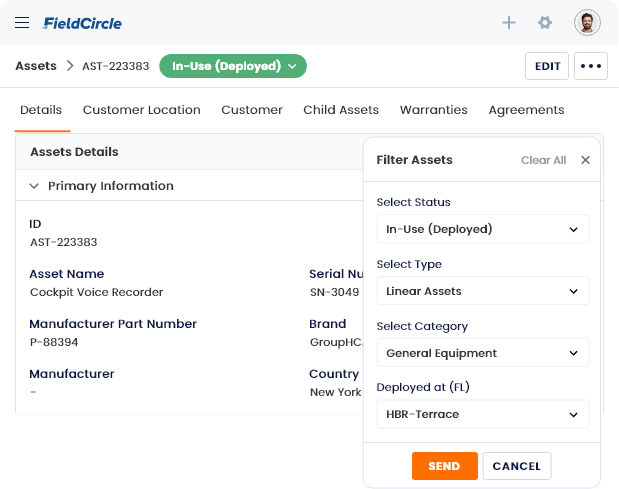
Sites and Location Management

Effortlessly track and manage assets across multiple sites with our software’s geo-tagging and site-specific categorization feature. It offers remote asset monitoring capabilities and enhances operational efficiency across multiple locations.
Vendor Management with RFQ and PO

Our tool leverages AI algorithms for predictive analysis of your physical assets, simplifying decision-making during Purchase Request (PR) and Request for Quotation (RFQ) processes. The software’s API connectivity streamlines the integration of Quotes and Purchase Orders (PO), ensuring a dynamic and responsive procurement workflow.
Work Order Management
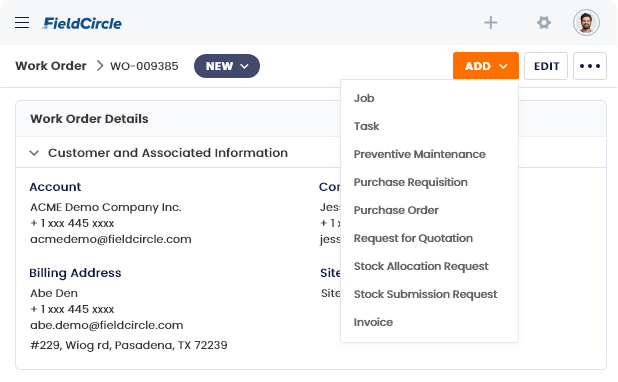
Manage maintenance, repairs, and other work requests associated with your assets most efficiently with organized scheduling. By streamlining the process of managing work orders, our tool ensures that assets are maintained promptly and effectively, thus reducing downtime and enhancing operational reliability.
Contract and Warranty Management
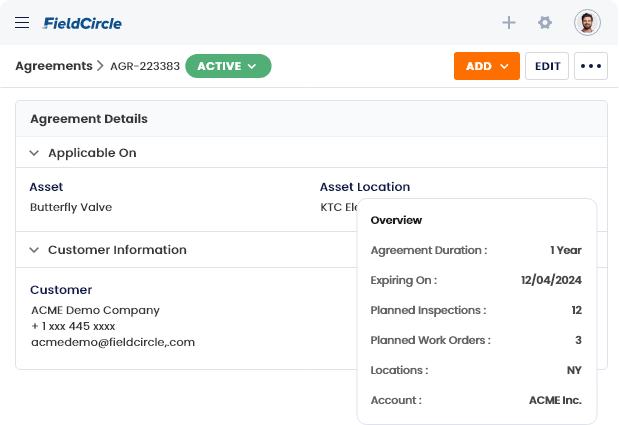
Efficiently manage contracts and warranties of assets with expiration alerts and renewal notifications. Digitally store important documents, ensuring timely compliance and eliminating risks associated with outdated agreements.
QR Code Labeling and Scanning
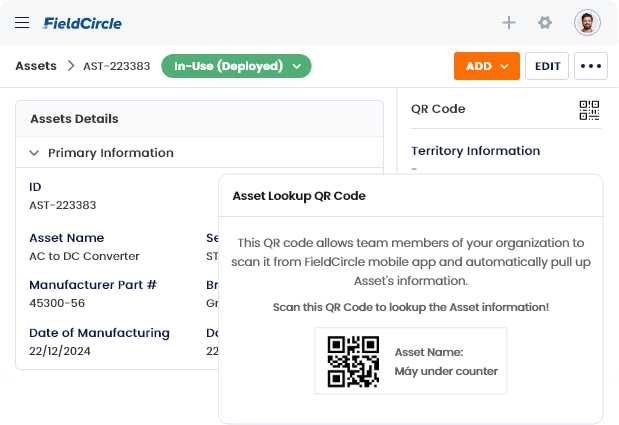
Enhance operational efficiency using QR codes for quick asset identification, GPS tracking, and inventory management, thereby simplifying the processes and improving accuracy with swift scanning capabilities.
Inventory and Supplies Management
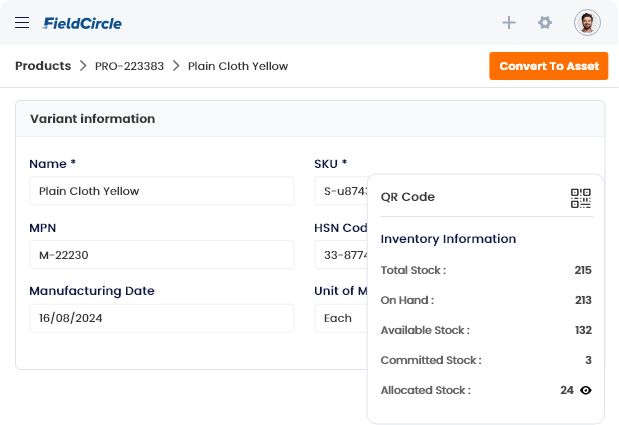
Benefit from predictive analytics and machine learning capabilities as our asset management system optimizes stock levels. With its automated triggers, reorder and dynamic adjustments keep inventory above safety thresholds.
Preventive Maintenance and Inspection
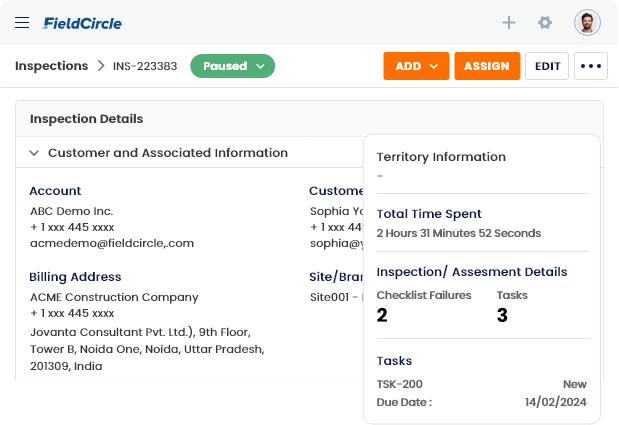
Schedule, track, and record preventive maintenance activities and inspections to extend asset life and maintain compliance. Ensure optimal performance by proactively addressing maintenance needs.
Time-Tracking and Timesheets
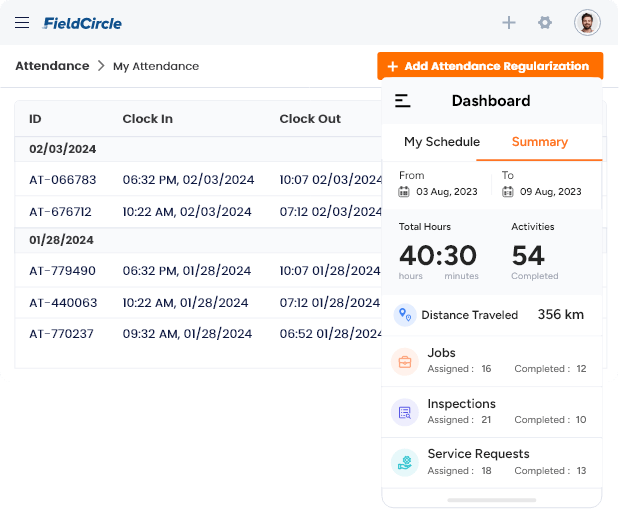
Efficiently manage asset-related tasks with precise time tracking and detailed timesheets. Capture labor hours dedicated to maintenance and inspections, enabling accurate project costing and resource optimization.
Approvals and eSign Off
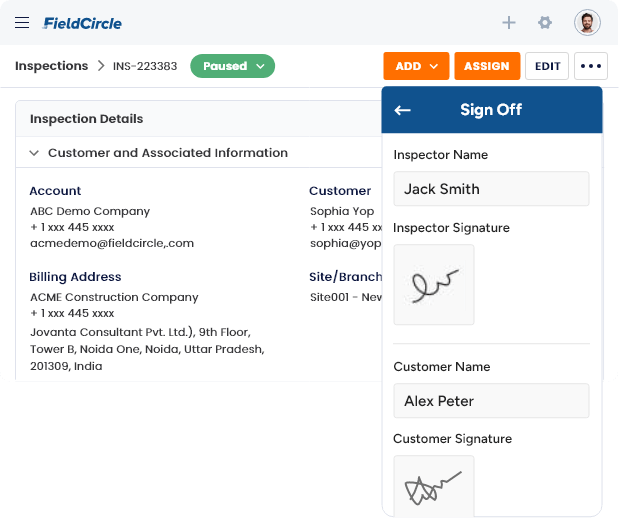
Streamline document approval workflows for optimizing your asset lifecycle management with advanced electronic signatures, integrating seamlessly for a paperless process, while maintaining the integrity of approvals with cryptographic security measures. Our software improves compliance with industry standards for secure eSign-offs, offering a robust audit trail.read more
Reports and Dashboards
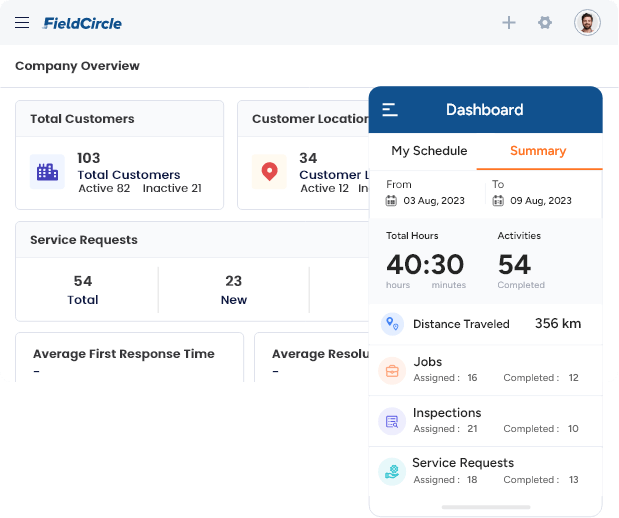
Generate customizable reports and dynamic dashboards that provide deep insights into asset performance, usage trends, and maintenance schedules. Utilizing advanced analytics, our platform empowers data-driven decision-making, facilitating strategic planning and optimizing overall asset management strategies.
Conditional Logic and Smart Forms
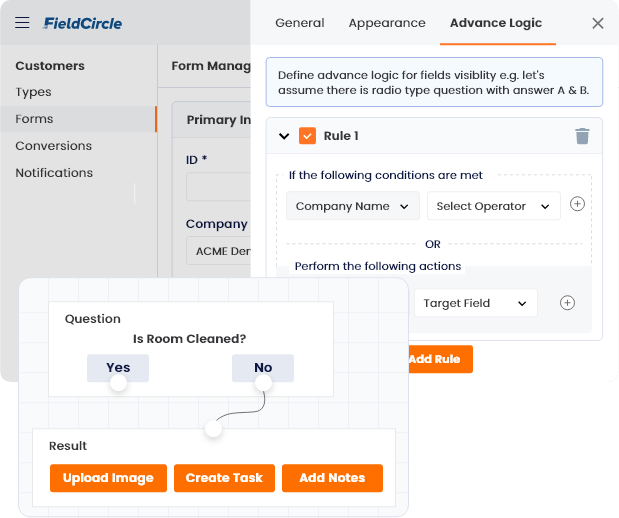
Employ intelligent forms into your asset management strategy, which adapt dynamically based on user input that promotes data integrity and simplifies complex workflows. Ensure accurate and streamlined data collection, eliminating errors and enhancing the efficiency of physical asset management processes.
Full Mobile Accessibility
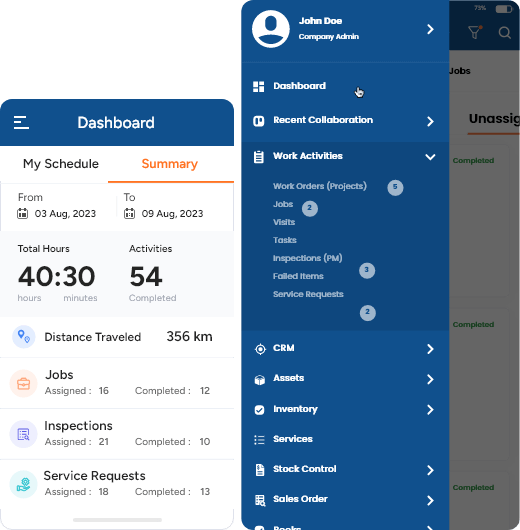
Experience unparalleled flexibility with our mobile-friendly software, offering on-the-go access to critical asset information and management tools. Stay connected with real-time updates, enabling responsive decision-making and ensuring efficient asset oversight from anywhere, anytime.read more
Depreciation and Reconciliation
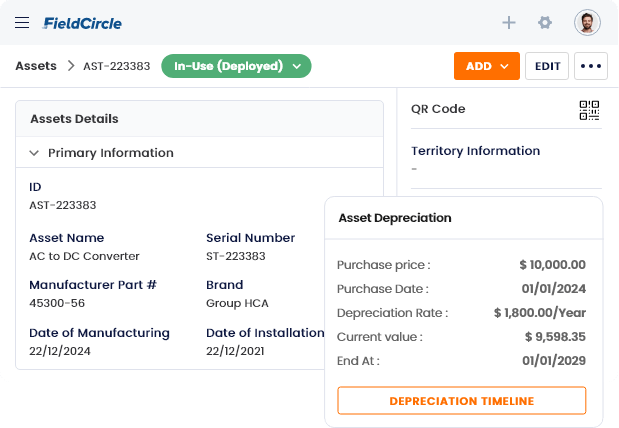
Track asset depreciation for precise accounting and financial reporting, thereby streamlining audit processes and enhancing financial transparency with robust depreciation management features. Our system facilitates accurate reconciliation of physical inventory with recorded data, and eliminates discrepancies.
The Impact of FieldCircle’s Asset Management Software
Our asset management software will aid your business in various ways by providing functionalities to:
Why Choose FieldCircle for Assets Management Software?
There are innumerable benefits of the asset management app that you experience by choosing to work with
FieldCircle. You should
bank on our capabilities as we infuse our tool with many business-specific
maintenance work order programs, offering
Industries That Can
Benefit From Our Asset Management Software
Our asset management software caters to the needs of businesses from industries that include but are not limited to:
What Customers Say
About Our Assets Management Software
FieldCircle has provided a positive experience by significantly improving our service and maintenance operations through its robust features and reliable performance.

FieldCircle has been transformative for our ops. We were already using technologies but FC has replaced most due to its comprehensiveness and awesome support team.

Business that Trust us for Assets Management Software
Discover the remarkable impact of FieldCircle as our trusted clients share their success stories and
client feedback on how
they have transformed their service operations.

Cushman & Wakefield
Cushman & Wakefield, a global powerhouse in the commercial real estate services sector, enhances customer satisfaction, improves operational profitability, and achieves better vendor collaboration with FieldCircle.
Read the Story

TSI Power
A leading US-based manufacturer, TSI Power Corporation, USA improves resource utilization, enhances productivity with FieldCircle implementation.
Read the Story

Yourspace
YourSpace partners with FieldCircle to achieve service operations excellence leading to higher profitability and customer experience.
Read the Story

Nicco Engineering
Speciality maintenance service provider achieves more agile, transparent, and resilient service operations with FieldCircle.
Read the Story
Book a Personalized Demo
Learn how your business can use FieldCircle’s asset management software to achieve more efficient,
transparent, and profitable asset operations.
By submitting your details, you agree that we may contact you by call, email, and SMS and that you have read our terms of use and privacy policy.
Frequently Asked Questions (FAQs)
Quick answer to questions you may have.
What is assets management software?
Assets management software is a digital solution designed to track, organize, and optimize an organization’s assets throughout their lifecycle. It streamlines processes such as maintenance, depreciation, and procurement, providing real-time insights into asset utilization and performance.
Why do businesses need assets management software?
Businesses benefit from assets management software as it enhances efficiency, reduces operational costs, and ensures regulatory compliance. It enables proactive maintenance, minimizes downtime, and provides accurate data for informed decision-making, ultimately maximizing the lifespan and value of assets. Moreover, in today’s times, assets cover both hardware and software, and you can manage both these kinds superbly with a customized asset management tool.
What types of assets can be managed with assets management software?
Based on the nature of the industry the business is working in, our assets management software offers the capability to handle a diverse range of assets, including equipment, vehicles, machinery. It helps in efficiently monitoring and managing assets, thus offering comprehensive control over their entire asset portfolio.
What pricing models are available for assets management software?
We offer subscription-based pricing models for our assets management software, with costs varying based on the number of users, features, and asset volume, and software licenses. We take these factors to come up with pricing plans for your business. For more details, you can discuss your requirements and get precise estimates from our team.
What customer support options are available?
Our help desk system offers extensive online documentation, responsive email support, and efficient live chat assistance. With priority support and dedicated account managers, we ascertain that our clients receive the assistance they need promptly. Additionally, we provide training sessions and webinars to empower users in maximizing the software’s potential.
